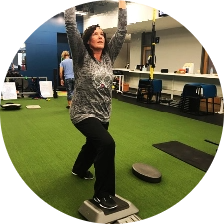Services
Treatment for Spinal Tumor

A spinal tumor is an abnormal mass of tissue that forms within or near the spinal cord and/or column.
Tumors in the spinal column can cause the bone to weaken or expand. This can result in back pain, spinal fractures, spinal instability, and compression of the nerves. Without immediate treatment, spinal tumors may cause neurological problems and paralysis and can be life-threatening. Spinal tumor therapy is recommended to mitigate the risk of complications.
IMPORTANT: You deserve to know the truth!
Drugs and surgery won’t cure the pain! Avoid the 55%+ failure rate and get lasting relief today!
Click Here To Learn All Your Options For Treating Spinal Tumors
Symptoms of Spinal Tumor
As a tumor grows, it can damage the nerve roots, blood vessels, spinal cord cells, vertebrae of the spine, and the meninges. Individuals with spinal tumors may experience the following symptoms:
- Back pain that radiates to the hips, legs, feet, or arms
- Difficulty walking
- Loss of bowel or bladder function
- Loss of sensation in the arms or legs
- Mild to severe muscle contractions, twitches, or spasms
- Pain at the site of the tumor
- Severe back pain that worsens at night
Spinal tumor symptoms can differ based on the tumor’s location and whether it is cancerous.
Diagnosing a Spinal Tumor
Getting an accurate diagnosis for a spinal tumor is critical for determining an effective treatment plan. This process typically involves a careful review of the patient’s medical history, a physical exam, and medical imaging tests including CT, MRI, and PET scans.
If a spinal tumor is detected via imaging, a biopsy may be necessary for verification and to get more information about the tumor.
Traditional Treatments
The following treatments are usually recommended for spinal tumors:
- Medications – Physicians may prescribe nerve pain medications, opioids, NSAIDs chemotherapy drugs, and immunotherapy drugs to manage symptoms and provide relief from spinal tumor pain.
- External beam radiation therapy (EBRT) – A specialized machine is used to send a beam of radiation into the body to target and destroy the tumor cells.
- Surgery – Surgery is required to shrink or completely remove the tumor, preserve neurological function, and maintain spinal stability. Thoracic laminectomy, which involves removing the back part of a thoracic vertebra, is one of the most common surgical options for a spinal tumor.
With that said, there is no guarantee that these traditional treatment options will bring positive results. Spinal tumor surgery on adults has even been associated with major complications.
TruMove
TruMove delivers safe and long-term relief by understanding the primary source of pain. We offer the following treatment options:
Full-body Movement Assessment
Successful healing begins with discovering the root cause of the patient’s pain. In most cases, pain in one area is only a symptom of a larger issue. In a full-body movement assessment, the source of the problem is identified by examining the movement of nearby or connected parts. This allows movement to be restored and the body to complete the healing process.
Hands-on Manual Therapy
The Superior Method employs the help of a trained therapist certified in functional manual reaction. The therapist uses their hands to facilitate proper motion, improving areas of restriction. This is similar to deep tissue massage, but it incorporates movement.
Prescriptive Home Exercise Program
The Superior Method aims to educate patients on how the body moves to safely ease pain and restore function. With our smartphone app called Movement RX, we empower patients with the knowledge and tools needed to attain long-term physical freedom. All of the instructions provided by your physician will also be video-recorded and sent directly to your email or mobile device.
Applied Functional Science
This principles-based method is designed to improve how the mind, body, and spirit work together to facilitate complete healing. All Superior Physical Therapy providers are Fellows of Applied Functional Science through the Gray Institute. This organization is led by the reputable physical therapist, Dr. Gary Gray.
Deep Muscle Stimulation
Mechanical vibrations that penetrate deep into the muscle tissue enable tissue regeneration and improve the lactic cycle, which is one of the most common causes of pain. The procedure also helps boost circulation and lymphatic flow to alleviate pain.
Dry Needling
A fast, safe, and virtually pain-free method to reduce pain and address musculoskeletal presentations. In dry needling, trigger points or local contractures are stimulated by monofilament needles.
McKenzie Therapy
The McKenzie Method® of Mechanical Diagnosis and Therapy® (MDT) is a distinguished and internationally researched method of diagnosis and treatment for spinal and extremity musculoskeletal conditions. Created by New Zealand Physiotherapist Robin McKenzie, this system has been used globally for over 60 years. MDT-certified clinicians assess and treat all types of musculoskeletal disorders including complications in the spine, muscles, tendons, and extremity joints.













